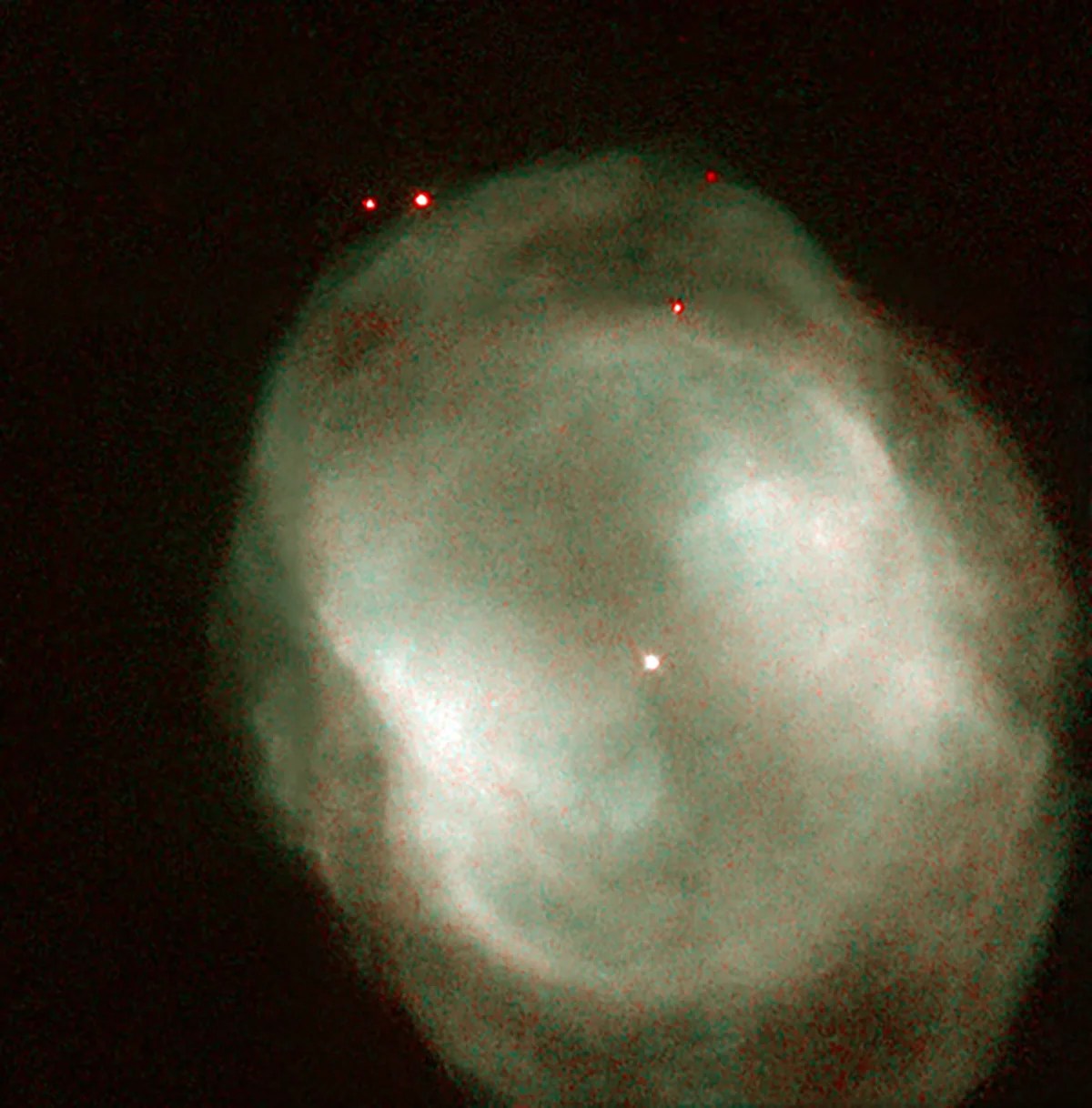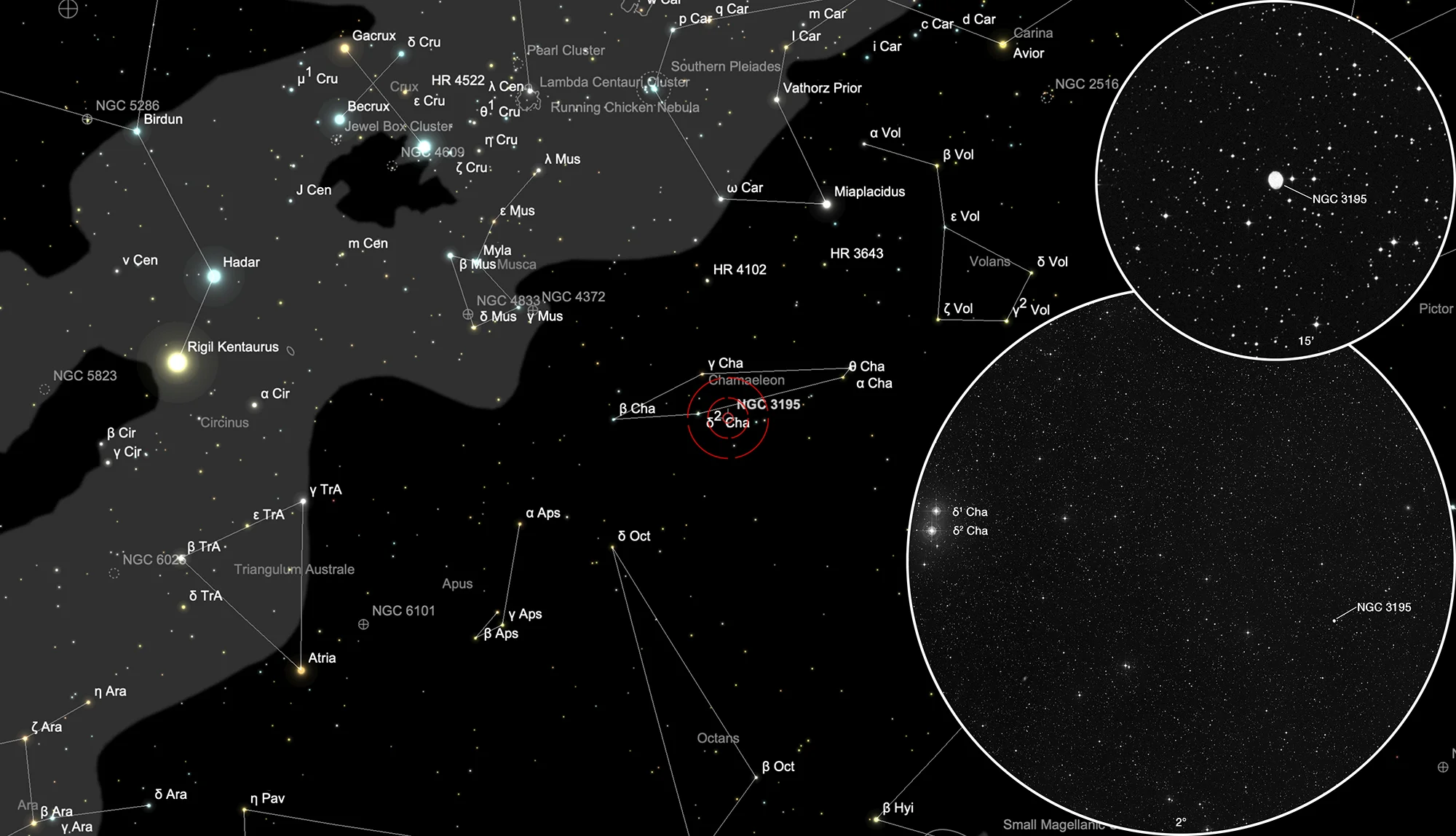Planetary Nebula NGC 3195

History
This planetary nebula was discovered by John Herschel on 24 Feb 1835 using his 18.3-inch telescope at Feldhausen observatory in South Africa. He listed it as h 3241 and observed it twice. He noted: «Planetary nebula, pretty bright, not quite uniform in its light, having two brighter patches, little extended towards a star (a); slightly hazy; diameter = 15 or 18" (in RA 13 seconds of time). Position of star a = 265.7, distance = 0.7 diameter from edge, 11th mag.; of star c, position = 210.7 , distance = 1 3/4 diameter from edge.» On 28 March 1837 (sweep 780) he wrote: «Planetary nebula, round or very little extended; a very little hazy at the edges but still pretty well defined with 240 power. Viewed long and with much attention, being a very remarkable object. I am positive of the existence of two brighter portions near the edges.» [11]
Physical Properties
| Designation | NGC 3195 |
| Type | PN |
| Right Ascension (J2000.0) | 10h 09m 21.1s |
| Declination (J2000.0) | -80° 51' 29" |
| Diameter | 0.7 × 0.5 arcmin |
| Photographic (blue) magnitude | 11.5 mag |
| Visual magnitude | 11.6 mag |
| Metric Distance | 1.975 kpc |
| Dreyer Description | ! planetary, pB, S, lE, 13s d, 3 S st nr |
| Identification, Remarks | h 3241; GC 2063; PK 296-20.1; ESO 19-PN2; AM 1009-803 |
Finder Chart
The planetary nebula NGC 3195 can be found in the constellation Chamaeleon. Unfortunately it is not visible from Europe. On 20 February it in opposition with the Sun and is therefore highest in the sky at local midnight.
